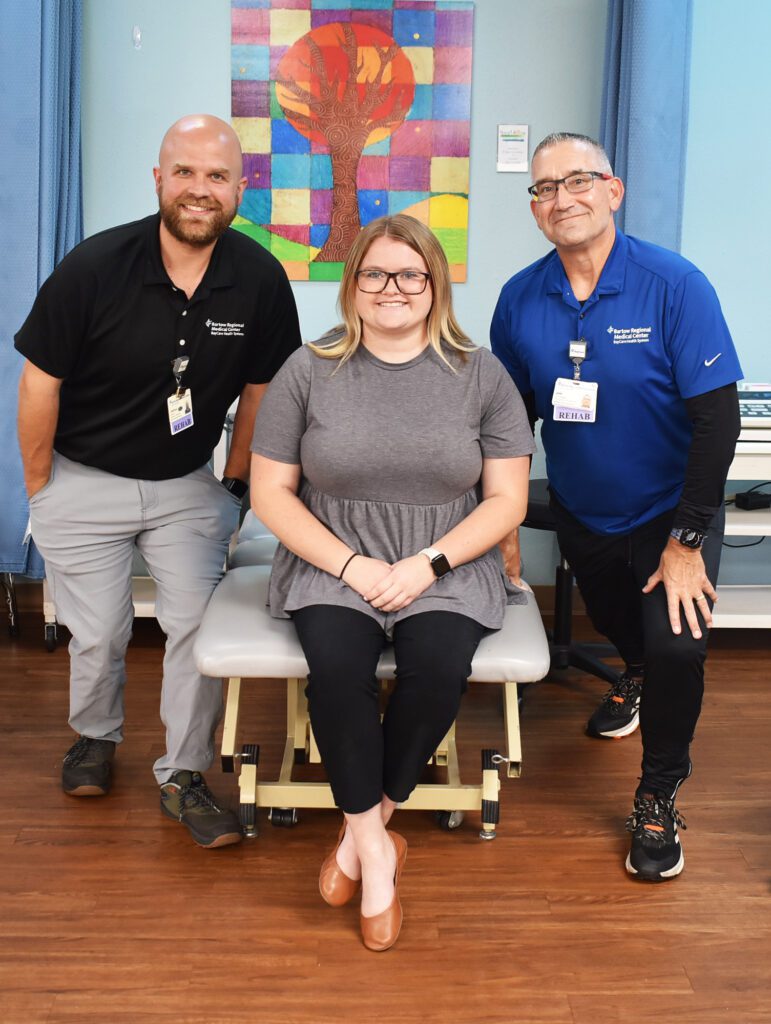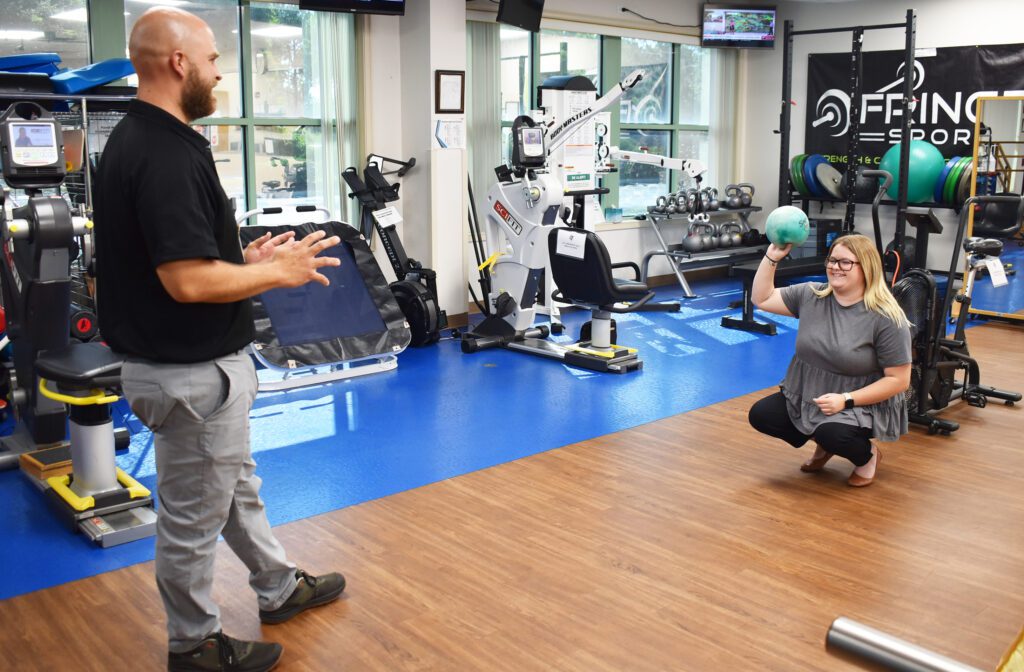

Bartow, Fla. – Twenty-year-old Bailey Caustic was at a softball practice with her sister in Bartow on the evening of March 24 when she began feeling strange.
Later, Caustic and her little sister laid down on a trampoline at their parents’ house to take a break, but she couldn’t catch her breath.
“I could breathe in, but I couldn’t breathe out,” she recalled. “Then I had this excruciating headache. I was dizzy and had blurred vision. I went inside and took a couple of ibuprofen and laid down. I just closed my eyes for about 20 minutes.”
Caustic didn’t realize it at the time, but she was having a stroke. Thanks to Bartow Regional Medical Center’s new designation as a Primary Stroke Center, she was close to life-saving care.
At the time, though, Caustic thought she just needed some rest. She decided to get up and head to her own home. But her father took one look at her and knew something wasn’t right.
“My dad thought my eye was drooping and I thought it was just because I had been rubbing my eyes, so I didn’t think anything of it.”
About five minutes later, on the drive home, Caustic’s fiancée noticed the whole right side of her face was drooping.
“Then I started feeling the tingling in my arm and leg,” Caustic said. “I Facetimed my dad’s girlfriend who was a nurse at Bartow Regional. She looked at me and said, ‘Go to the hospital.’ ”
Brenda Staats was on the receiving end of that video call. She spent more than 12 years at BRMC, including 10 of those years as an emergency department nurse, so she was immediately concerned.
“The facial drooping was severe,” Staats recalled, who is now a BayCare Home Care nurse. “I was concerned she was having a stroke. She told me about her symptoms. I told her she needed to get to a hospital because if it was a stroke, she was on a time frame.”
Staats knew she was nearest to Bartow Regional Medical Center and ordered Bailey to get there right away, knowing of the stroke program.
Caustic’s stroke symptoms struck in just minutes, meaning that time was truly of the essence. She arrived at Bartow Regional Medical Center’s Emergency Department, prompting an immediate stroke alert. The hospital was certified by Det Norske Veritas, or DNV, in January as a Primary Stroke Center, so the entire team was ready to respond.
Stroke patients can receive Tenecteplase (TNK), a blood-thinning medication that can break up blood clots and help resume blood supply to the brain. However, it must be administered a short time after symptoms begin, which is why it is important to call 911 when you recognize someone is experiencing any stroke symptoms.
Caustic had arrived at the hospital approximately two hours after the onset of her symptoms.
“I began to feel better almost immediately after receiving the treatment,” she said. She was transferred to the ICU for observation, then moved to a patient room for recovery. However, her journey wasn’t over. Her right side was weakened from the stroke.
With DNV’s Primary Stroke Center certification, new protocols were triggered that included the involvement of the Bartow Regional’s rehabilitation services.
“Bartow Regional Medical Center’s certification is made possible by the efforts of our multidisciplinary team. We work together to ensure we meet specific standards for providing high-quality care for patients experiencing stroke,” said Laura Moore, nurse manager of the stroke programs at both Bartow Regional Medical Center and both Winter Haven hospitals. “This includes having specialized physicians, equipment, trained staff and protocols in place to rapidly assess, diagnose and treat.”
The rehab team began working with Caustic during her hospitalization to help her regain mobility and strength on her right side.
“We get the patient out of bed as soon as possible,” said Jim Goodwin, manager of Bartow Regional Medical Center’s Rehabilitation Services. “With Bailey, she had a hemiplegic (one-sided weakness) gait and needed a brace to support her foot after the stroke.” The brace was to correct her right leg’s stiffness and its tendency to move in a semicircle, rather than a normal step.
After her six-day hospitalization, Caustic continued her work with the rehab team, moving to daily physical therapy at the outpatient center next to the hospital.
“I was a little depressed. As a 20-year-old, you don’t think this could happen to you and it was very scary,” she said. “I had lost all my mobility and had no strength on that side. I couldn’t have gotten through it without the rehab team.”
The team helped Caustic relearn how to use her right side, from using a peg board to help improve hand-eye coordination, to resistance training and continued work on her walking. Finally, they worked on her throwing skills and squatting so she could get back on the softball mound.
Caustic said that her care at Bartow Regional Medical Center played a huge role in her attitude and her recovery. Of her ICU nurse, Chrystal Deese, she said, “Words can’t express how amazing she was. She made me have so much hope. She held my hand and would tell me I was going to be okay.”
And as she took on the difficult work of rehab, she was grateful for Goodwin’s constant presence as a cheerleader. “You need somebody like him, who is committed to making you better, someone there to encourage you,” Caustic added.
Now, just weeks after the stroke, Caustic is back to doing everything she did before the stroke, although she is still building strength on her right side.
“Bailey, and patients like her, are the reason we made the effort to earn this certification as a team,” Moore said. “Having this type of care close to home when time is of the essence is pivotal.”


For more information: BayCare.org/BRMC.